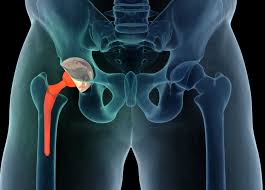Menu
Not sure what
you need?
Not sure what
you need?
Menu

You’ve had hip replacement surgery which has replaced damaged parts of the hip with metal or plastic parts, aimed at reducing pain, improving mobility, helping daily living activities and improving quality of life.
Recovery and rehabilitation to strengthen the new joint and improve flexibility can be across 3 months and the full benefits should be felt in 6-12 months.
Firstly, most people will be encouraged to walk with the help of a walking support soon after surgery. And, importantly, you will be advised on how to take care of your new hip and how to avoid hip dislocation. The key is to avoid bending, crossing legs, internally rotating the hip.
The following provides advice on what to avoid, plus some assistive devices and changes to make around your home that can prevent hip dislocation.
The Mobility Store always recommends you consult a suitably qualified health professional such as an occupational therapist for additional advice on your specific situation.
Sign up to stay updated and receive information about new arrivals and future specials.
Contact our Australia-wide line.

Sign up to stay updated and receive information about new arrivals and future specials.
Contact our Australia-wide line.